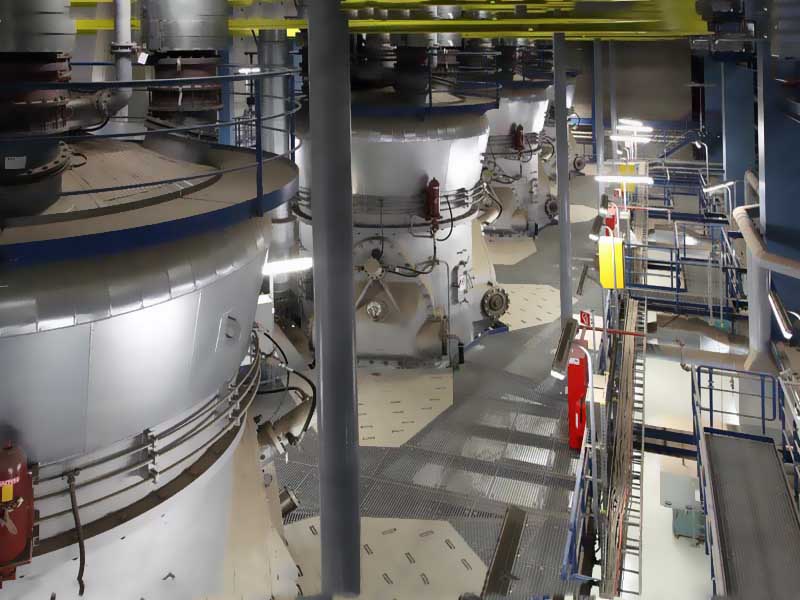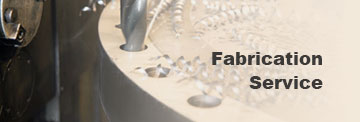Heat-Resistant Steel for Boiler

The heat-resistant steel used to make the boiler compression element mainly includes low-alloy high-strength steel, austenitic stainless steel and martensitic hot-rolled steel. Hot steel must also have good high temperature oxidation resistance and lasting strength. The most important alloying elements are Cr, Si and Al due to the formation of a complete, dense and stable oxide protective film on the surface of the steel. The most important alloying elements are Cr, Si and Al. Si and Al content will make the steel more brittle, so they can only add elements, usually with Cr-based. The strengthening mechanism of the hot steel is different from that at room temperature because the high temperature deformation is not only caused by the intra-crystal slip, but also the contribution of diffusion and grain boundary slip. Diffusion can promote the dislocation of the movement caused by deformation, while the proliferation itself can lead to deformation. At high temperature, the grain boundary strength is lower than the crystal strength, and the grain is easy to slip to cause deformation. Therefore, to improve the high temperature strength of steel should proceed from three aspects: solid solution strengthening, precipitation strengthening (dispersion strengthening) and grain boundary strengthening.
Low alloy heat resistant steel
12CrMoG is a common 0.5% Cr-0.5% Mo low alloy hot steel, through the Cr to improve the oxidation resistance of steel and high temperature strength, Mo can improve the high temperature of steel stability and strength. The steel at 480 ℃ ~ 540 ℃ under the conditions of sufficient thermal strength and operational reliability, long-term operation can still maintain the stability of the organization and high enough strength. The steel does not have a tendency to graphitize, nor is it hot brittleness, good processability and weldability, and has a high resistance to slack.
15CrMoG is widely used in the world of pearlitic chrome molybdenum heat-resistant steel, with good process performance, welding performance and high temperature strength, equivalent to the United States T11, T12 and P11, P12, Japan's STBA21, STBA22, STBA23. The steel in the 500 ~ 550 ℃ under long-term operation without graphitization tendency, but there will be pearlitic spheroidization, alloying elements from the ferrite to carbide migration and carbide type of the phenomenon of change, resulting in high-temperature steel performance reduce.
12Cr1MoVG belongs to pearlite low alloy hot steel. Compared with 15CrMoG, a small amount of V is added to the steel. The purpose is to improve the stability and thermal strength of the steel when the alloy is transferred to the carbide at long time when the steel is used at high temperature. The steel is mainly used for the production of wall temperature does not exceed 570 ℃ heating surface, wall temperature ≤ 550 ℃ of the header, steam pipes and large forgings.
12Cr2MoWVTiB (steel 102) is a low-carbon, low-alloy bainite-type heat-strengthened steel, mainly Mo, W composite solid solution strengthening, V, Ti composite dispersion strengthening and micro B strengthening. The role of B is manifested in two aspects, on the one hand can strengthen the grain boundary, on the other hand can be prepared ferrite transformation to obtain a single bainite structure. The steel is mainly used for wall temperature ≤ 600 ℃ high pressure boiler superheater, reheater and other high temperature components. 12Cr3MoVSiTiB (п11) is also a low carbon, low alloy bainite type heat steel. Compared with 12Cr2MoWVTiB, the steel has a higher antioxidant properties, but the lasting strength is not as good as the former. The steel is mainly used for the manufacture of wall temperature ≤ 600 ℃ ultra-high pressure and subcritical boiler superheater and reheater.
Austenitic stainless steel
In the high temperature conditions, the austenite has higher stability and strength than ferrite, has excellent thermochemical stability and high temperature strength, the maximum oxidation temperature can reach 850 ℃, while the steel also has excellent welding performance and Processing performance. But the quality of its alloy elements are more than 26%, and therefore expensive. 1Cr19Ni9 and 0Cr19Ni9 (equivalent to the United States TP304, TP304H and Japan's SUS304TB, SUS304TP) belong to the austenitic stainless steel, with excellent processing technology and welding performance, good organizational stability and thermal strength. The maximum temperature of the steel up to 650 ℃.
The oxidation temperature of up to 850 ℃, for the boiler tube to allow oxidation temperature of 705 ℃, can be used to manufacture large-scale boiler superheater, reheater and steam pipes. 1Cr19Ni11Nb and 0Cr18Ni11Nb (equivalent to TP347, TP347H, SUS347TB, SUS347TP) are Nb-stabilized austenitic hot-rolled steel, with high thermal strength and resistance to intergranular corrosion, process and welding performance is good. Mainly used in the manufacture of large-scale boiler superheater, reheater and steam pipe. The maximum operating temperature of 650 ℃, for the boiler tube to allow the oxidation temperature of 705 ℃, 0Cr17Ni12Mo2 (equivalent to TP316, TP316H, SUS316TB, SUS316TP) is a common austenitic stainless steel heat. Compared with other austenitic hot steel, steel contains 2% to 3% Mo, so that corrosion resistance and resistance to corrosion significantly improved, while still has a good thermal strength, cold deformation and welding performance. Can be used to manufacture large-scale boiler superheater, reheater and steam pipes, high temperature corrosion-resistant bolts, point corrosion parts.
Martensitic hot steel
10Cr9Mo1VNb (equivalent to T91, P91,1X20CrMoVNb91, STBA28) is widely used in China in recent years, a kind of martinitic steel, by the United States ORNL (Oak Ridge National Laboratory) first developed. Table 15-1g ~ Table 15-1j lists their chemical composition and mechanical properties, respectively. The steel is based on 9Cr-1Mo (T9, P9) by reducing the carbon content, adding alloying elements V and Nb, controlling the N and Al content, so that steel not only has high oxidation resistance and high temperature steam corrosion , But also has a good impact toughness and high and stable long-term plasticity and heat strength. The steel is mainly used in the manufacture of subcritical, supercritical boiler high temperature superheater, reheater, high temperature header and steam pipe. For the superheater when the wall temperature ≤ 625 ℃, reheater wall temperature ≤ 650 ℃, header and steam pipe wall temperature ≤ 600 ℃.
We receive enquiries in English, Español (Spanish), Русский язык (Russian), Français (French) and العربية (Arabic). Our professional team will reply to you within one business day. Please feel free to contact us!


